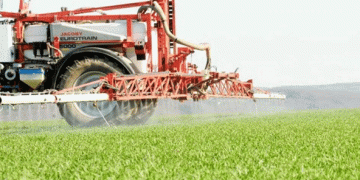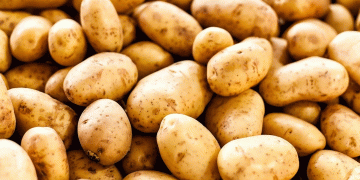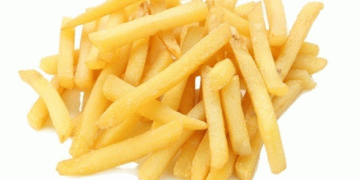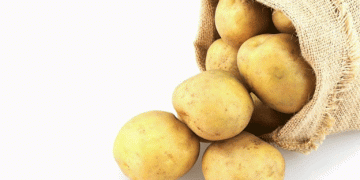While temperature is probably the most important potato storage concern, another important step in storing potatoes is ensuring adequate relative humidity levels in the storage shed.
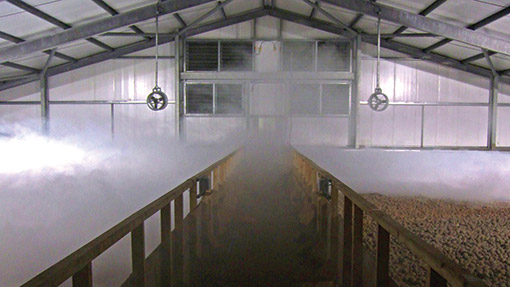
Relative humidity is the amount of moisture in the air at any given temperature, relative to the maximum possible at that same temperature. It is dependent on the temperature, so cold air holds less moisture than warm air. Potatoes lose more water during their first month of storage than any other time in storage. This is caused by wound healing, and can be kept to a minimum by controlling humidity.
The optimal level for potatoes in storage is around 95 percent relative humidity, or as high as possible without fully saturating the air, said Gale Kleinkopf, research professor emeritus at the University of Idaho.
At 100 percent humidity, water droplets can form on the tubers, which can speed up decay and lead to disease and rot. At less than 90 percent, the tubers dry out and are less appealing to customers. Potatoes are 85 percent to 90 percent water, and during storage they should ideally lose only 4 percent of their weight. And experts say that to keep water from accumulating on the potatoes and to keep the air at a cool enough temperature, the humidification system should circulate the air between 15 and 25 times an hour.
There are two dominant ways to maintain humidity in storage facilities. Active and passive systems have their advantages and disadvantages, so care should be taken when designing a new storage shed or revamping an old one. There are many factors that affect humidity in storage, such as insulation or circulation, but the goal of a shed is to reduce shrinkage, no matter what system is used. Any type you use to keep the humidity high is okay with me,” Kleinkopf said.

Active Humidification Systems
An “active” system is one that introduces water molecules into these air and is based strictly on gallons per hour. There are two types of active systems, high-pressure nozzles and centrifugal spinning disks, which both release atomized water into the air. There are some potential drawbacks to having only an active system. For one, the active system uses compressors, pumps or spinners — or all in combination to humidify the air. The more moving pieces, the more expensive it is to maintain.
Active systems also saturate the air well close to the nozzles or spinners, but less so further from the source. They are difficult to regulate and often result in too much or too little water into the air.
While the active systems may not be the most effective humidity solution, they’re not going by the wayside, either. Nathan Oberg, storage specialist for Gellert, Twin Falls, Idaho, said most of the systems his company installs include components from active and passive systems, depending on the region. In the West, a new building would include both because the air has lower humidity, but in the Northeast it may not be necessary. Ogberg said there was still a good chance both would be used in the Northeast.
Passive Humidification Systems
The second system used in storage applications is a “passive” system. These have no moving parts other than the pump to circulate water from a storage tank, so they require less maintenance than the active systems’ nozzles or spinners.
The passive system operates by passing air over a semi-solid cell, and air that is not saturated picks up water off the medium. Oberg said his company’s ClimaCell passive medium works by “evaporative cooling” that cools and humidifies air moving across the medium.
“It’s impossible to add too much humidity into the air,” he said.
The passive systems include a storage tank that recirculates the water. One such product sold by Techmark is called the Humi-Cell. It is a cardboard-type material that is available in 12-inch and 18-inch thicknesses, said Todd Forbush, salesman for Techmark’s fruit and vegetable systems.
Forbush said the advantage of a passive system is that you can get a relative humidity level that is consistent throughout the storage shed and stays at a constant level. A 12-inch cell can maintain 92 percent to 97 percent humidity, he said, while an 18-inch cell maintain 98 percent relative humidity. The thickness of the cell depends on the outside environment.
“In Michigan, our outside air RH coupled with low air speed through the Humi-Cell provide outlet air relative humidity in the 92 to 97 percent range,” Forbush said.
However, a disadvantage of the passive system is that the efficiency is fixed. Kleinkopf said a cell-type system can get the relative humidity to about 90 percent, so “the remainder has to come from the potatoes themselves, and that causes shrinkage.”
“This is true in the dry climate in the western states,” Forbush said. “The efficiency of the Humi-Cell media is based on the air speed through the media. Proper air speed and incoming air humidity determine the outlet air relative humidity.” The systems are also not completely free of problems, either. Although the cells, such as Techmark’s Humi-Cell, last 15 to 20 years, they can be damaged if not maintained properly, Forbush said.
He said he installs a bypass in every system, because water leaves the system due to evaporation but minerals are left behind. They have to be forced out to prevent calcium buildup or mineral backup. Without a bypass, the system will “concentrate minerals in the tank and it will start to scale the medium.” A cell that has mineral concentration problems will feel like sandpaper on the downwind side.
With any system, it is important to take preventative steps before filling a facility with potatoes. Oberg recommends conducting an annual check-up by a certified company before the harvest. That can prevent the headache of filling the shed only to find that part of the system doesn’t work and then having to repair it while the quality of the potatoes declines.




